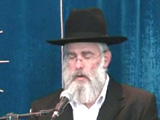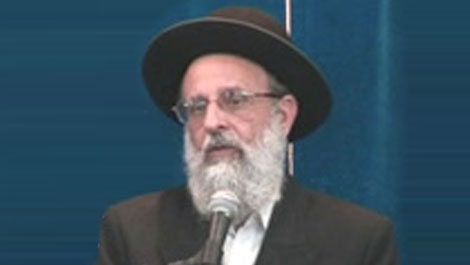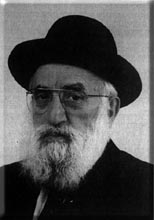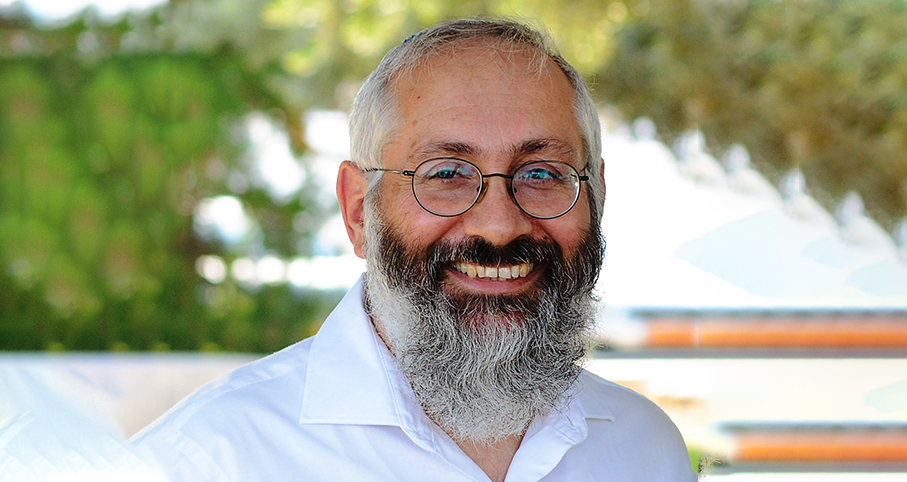Beit Midrash
- Sections
- Chemdat Yamim
- Parashat Hashavua
- Torah Portion and Tanach
- Bereshit
- Vayishlach
[Below are excerpts of an address Rav Yisraeli gave as part of a gathering of rabbis to remember Yeshivat Volozhin, which had closed approximately half a century before the event.]
In our parasha, we are told that Yaakov made a monument (matzeva) of stone upon his return to Eretz Yisrael (Bereishit 35:14), as he had promised when he was leaving the Land (ibid. 28:22). Chazal tell us that this stone was the even ha’shtiya (which stood on the place of the aron during the Second Temple Period). The Ramban (ad loc.) explains that the reason that it became forbidden to use monuments, which Hashem hates (Devarim 16:22), even though previously they were beloved, is that the idol worshippers had turned them into a part of their service.
We can expand on this idea within a broader philosophical light. We can break up modes of service of Hashem into two parts – the way the forefathers served Hashem, and the way the Israelite nation did. The fundamental difference between them is that the forefathers served as individuals, whereas the nation served as a community. Each of the three forefathers served through his own spiritual powers, with each one innovating and breaking new spiritual grounds. Avraham had a son other than Yitzchak, and Yitzchak had a son other than Yaakov. But each one was left out of the legacy, and the torch of service of Hashem was passed to an individual. Thus, the forefathers’ service was like a matzeva, with a single stone serving as a ladder that leads to a state of clinging to Hashem.
Afterwards, though, the Jewish Nation was established, and we quickly start having distinctions. There are Levi’im and Yisraelim, those who are close and those who are distant, upper and lower echelons. Yet all of them join together to form one mizbe’ach (altar). A higher pillar cannot exist if it does not rest on a lower pillar. With no foundation, there is no building.
"When it rested, he would say: ‘Return, Hashem, unto the ten thousands and thousands of Israel’" (Bamidbar 10:36). Chazal teach us that the Divine Presence dwells on no less than 22,000 Jews (Yevamot 63b). When one of these people is missing, no matter how simple or distant a person he is, that missing piece of the edifice causes the whole structure to be untenable, and the Divine Spirit will not dwell. This is what an altar represents, and this is what the Israelite nation is about – one united altar made of many pieces of stone.
The Volozhiner Yeshiva made the existence of the town of Volozhin famous, while the people and history of its Jewish community remain mainly unknown. However, without the town and other towns like it, the yeshivot, which produced great Torah giants, could not have existed. Unfortunately, we do not have many communities like Volozhin in Eretz Yisrael these days, which are willing to do that which it takes to form a yeshiva. Our village (K’far Haro’eh, with its modest hard work and its very Israeli lifestyle, worked hard to build a home for the home of Torah (Yeshivat K’far Haroeh), with an atmosphere that is conducive to the development of a Torah institution.

Is there a Way to Permit Ribbit (Usury)?
Rabbi Yossef Carmel | Elul 10 5782

Do Not Desecrate the Land
Rabbi Yossef Carmel | Tammuz 5767

Present or Inheritance... or Both?
Various Rabbis | Tevet 5768























